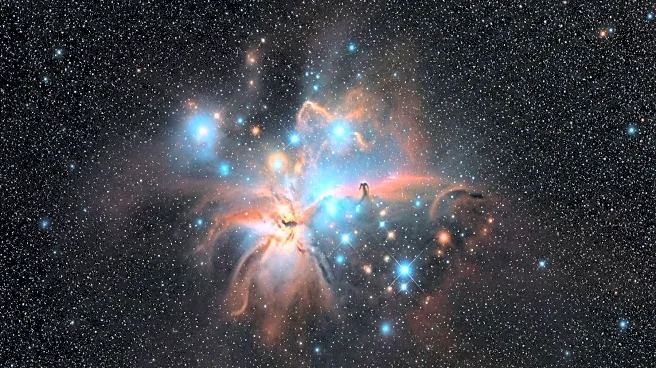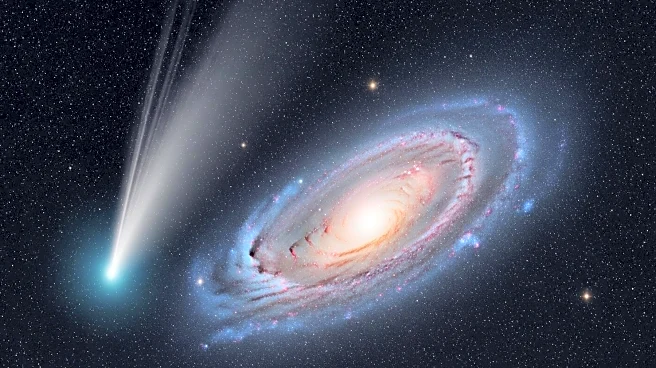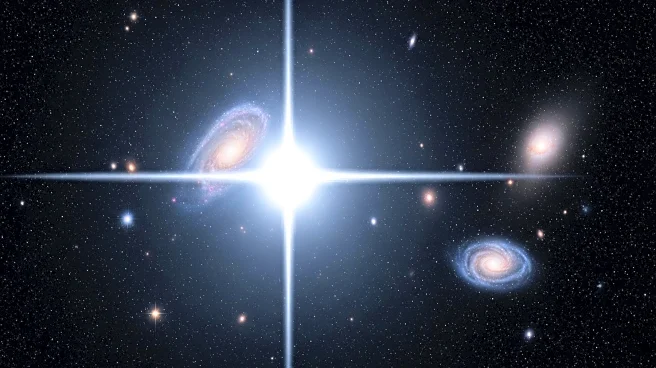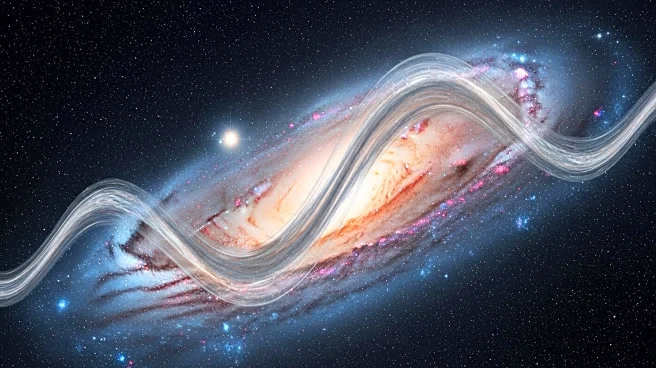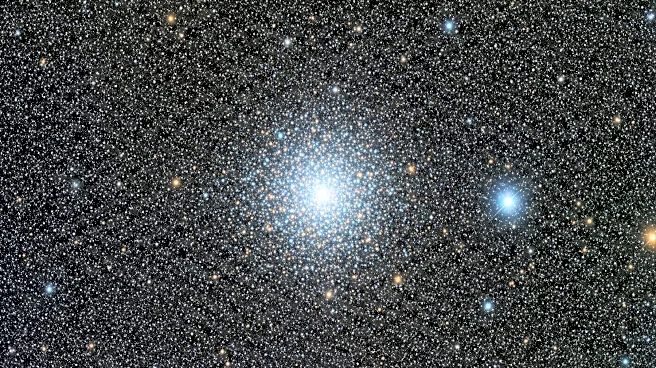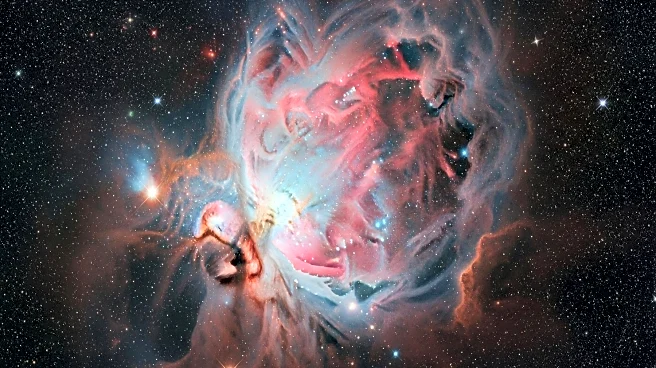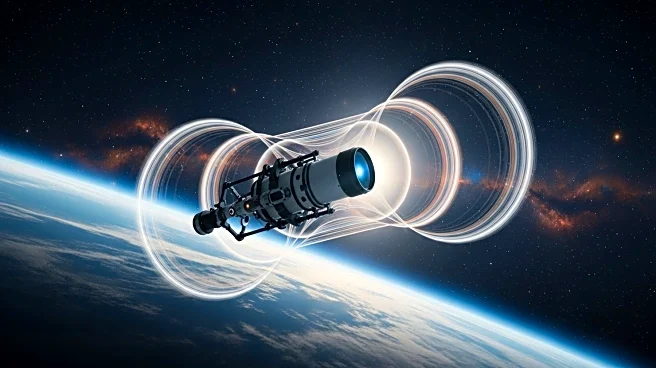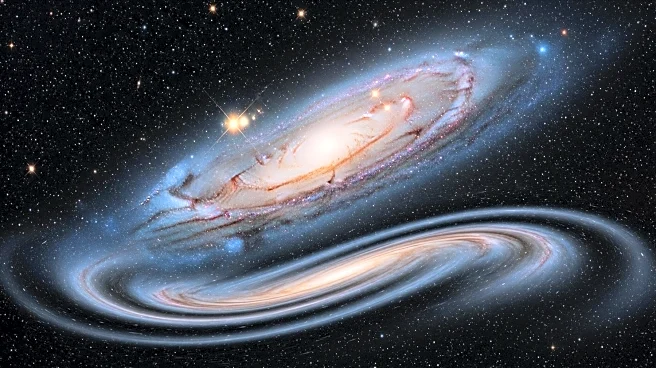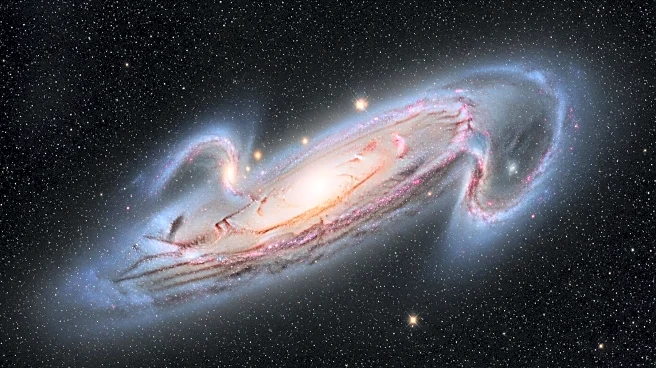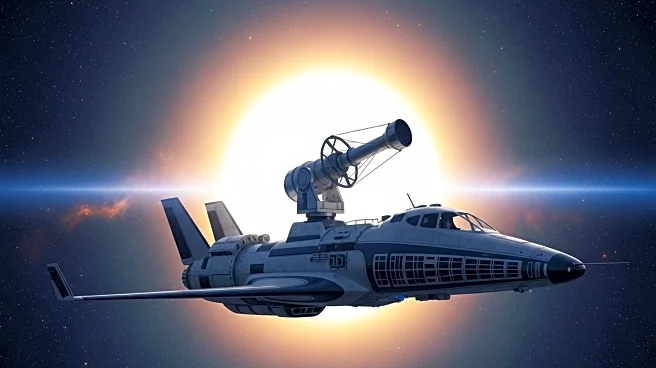What's Happening?
The Hubble Space Telescope has captured a detailed image of a star cluster within the Large Magellanic Cloud (LMC), a satellite galaxy of the Milky Way. This observation focuses on the second-largest star-forming region in the LMC, known as N11. The image combines data from Hubble's Advanced Camera for Surveys and Wide Field Camera 3, collected over a span of 20 years. The LMC, located approximately 150,000 light-years from Earth, is an irregular galaxy that provides astronomers with a unique opportunity to study stellar evolution and the chemical differences between galaxies.
Why It's Important?
The LMC's proximity and distinct chemical composition make it an ideal laboratory for understanding star formation and galactic evolution. By studying the LMC, astronomers can gain insights into the processes that govern the life cycles of stars and the dynamics of galaxies. This research can enhance our understanding of the universe's history and the factors that influence the development of cosmic structures. The findings from such studies have implications for astrophysics and can inform future space exploration missions.

